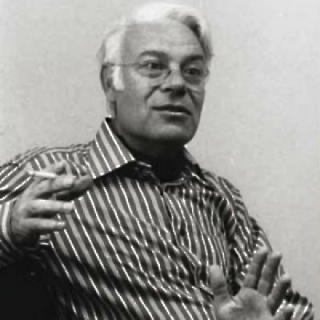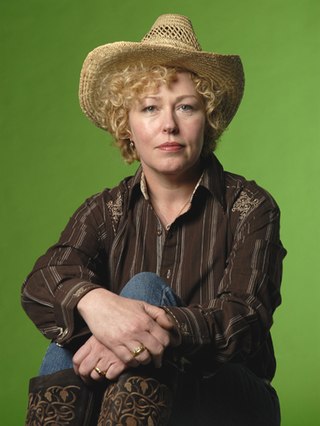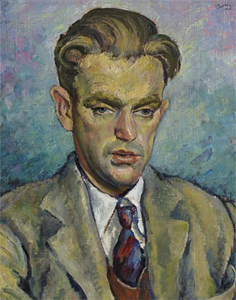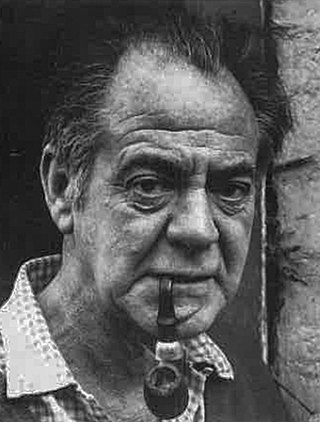Related Research Articles
The National Gallery of Victoria Art School, associated with the National Gallery of Victoria, was a private fine arts college founded in 1867 and was Australia's leading art school of 50 years.
Bob Jenyns was a prolific Australian artist whose practice, spanning over four decades, produced countless sculptures, prints, drawings, and paintings. He participated in many of Australia's most significant art exhibitions including the first Biennale of Sydney (1973), the 1973, 1975 and 1978 Mildura Sculpture Triennials, the 1981 Australian Perspecta, the 2nd Australian Sculpture Biennale, and the 1990 Sculpture Triennial. Jenyns was a finalist in the 2006 Helen Lempriere National Sculpture Award, and in 2007 won the award with his work Pont de l'archeveche. He is represented in many of the country's largest collections, including the National Gallery of Australia, the Art Gallery of New South Wales, the Queensland Art Gallery, the Museum of Contemporary Art in Brisbane, and the Tasmanian Museum and Art Gallery. Jenyns also received multiple grants from the Australia Council's Visual Arts Board, curated exhibitions and taught at the Tasmanian School of Art as head of the sculpture department (1982–2005).

Vaughan Murray Griffin was an Australian print maker and painter.
Contemporary Indigenous Australian art is the modern art work produced by Indigenous Australians, that is, Aboriginal Australians and Torres Strait Islander people. It is generally regarded as beginning in 1971 with a painting movement that started at Papunya, northwest of Alice Springs, Northern Territory, involving Aboriginal artists such as Clifford Possum Tjapaltjarri and Kaapa Tjampitjinpa, and facilitated by white Australian teacher and art worker Geoffrey Bardon. The movement spawned widespread interest across rural and remote Aboriginal Australia in creating art, while contemporary Indigenous art of a different nature also emerged in urban centres; together they have become central to Australian art. Indigenous art centres have fostered the emergence of the contemporary art movement, and as of 2010 were estimated to represent over 5000 artists, mostly in Australia's north and west.
Basil Hadley was an English Australian printmaker and painter. His works are represented in National and State public galleries around Australia and in various private collections.
Eric Prentice Anchor Thake was an Australian artist, designer, painter, printmaker and war artist.

Udo Sellbach (1927–2006) was a German-Australian visual artist and educator whose work focused primarily around his printmaking practice.

Mornington Peninsula Regional Gallery (MPRG) is a public art gallery on the Mornington Peninsula, south-east of Melbourne, Australia. The gallery opened in 1971, and holds both traditional and contemporary Australian art. The gallery is host to the National Works on Paper (NWOP) acquisitive art competition, established in 1998.

Linde Ivimey is an Australian sculptor.
Pam Hallandal was an Australian artist, best known for her work in drawing and print making.
Mary McCartney Macqueen was an Australian artist who was known for her drawing, printmaking and mixed media works on paper. Her artistic style was expressive, gestural and experimental.
The Prahran College of Advanced Education, formerly Prahran College of Technology, was a late-secondary and tertiary institution with a business school, a trade school, and a multi-disciplinary art school that dated back to the 1860s, populated by instructors and students who were among Australia’s significant artists, designers and performers.
Stephen Wickham is an Australian photographer, painter and printmaker.
Jacqueline Mitelman is an Australian portrait photographer.
Barbie Kjar is an Australian artist and educator, specialising in printmaking and drawing. Her work is included in the permanent collections of the National Gallery of Australia, the National Gallery of Victoria, Tasmanian Museum and Art Gallery, and the Gold Coast City Art Gallery.
Hertha Kluge-Pott is a German-born Australian printmaker based in Melbourne.

Allan Holder Jordan (1898–1982) was an Australian painter, designer, printmaker and teacher.

Barbara Nancy Brash was a twentieth-century post-war Australian artist known for her painting and innovative printmaking. In an extensive career she contributed to the Melbourne Modernist art scene, beside other significant women artists including: Mary Macqueen, Dorothy Braund, Anne Marie Graham, Constance Stokes, Anne Montgomery (artist) and Nancy Grant.

Alan Robert Melbourne Sumner was an Australian artist; a painter, printmaker, teacher, stained glass designer and WW2 Royal Australian Air Force veteran.

Jack Courier (1915–2007), a.k.a. John, was an Australian Modernist printmaker, painter and teacher.
References
- 1 2 3 Cross, Elizabeth; Maloon, Terence; National Gallery of Victoria (2004), Allan Mitelman : works on paper 1967-2004, National Gallery of Victoria, ISBN 978-0-7241-0250-1
- ↑ "Allan Mitelman: Associates". Design and Art Australia Online. Retrieved 27 March 2023.
- ↑ "New exhibitions start at the V&A". The Kensington News and West London Times. 14 July 1972. p. 2.
- 1 2 "Allan Mitelman: Works". Museum of Modern Art.
- ↑ Pascoe, Joseph; Victorian College of the Arts (2000). Creating : the Victorian College of the Arts. Victoria: Macmillan. ISBN 9780958574389. OCLC 54057837.
- ↑ Buckrich, Judith Raphael; Prahran Mechanics' Institute (2007), Design for living: a history of 'Prahran Tech', Prahran Mechanics' Institute Press, pp. 96–99, ISBN 978-0-9756000-8-5
- ↑ Maloon, Terence; Selwood, Paul (2011). Abstraction : Michael Buzacott Virginia Coventry Paul Hopmeier Roy Jackson Jan King Allan Mitelman John Peart James Rogers Paul Selwood & Aida Tomeson. Catalogue of an exhibition held at ANU Drill Hall Gallery, Canberra, 18 August-25 September 2011. Canberra: Australian National University, Drill Hall Gallery. ISBN 9780980804447.
- ↑ "A gift of ten drawings by Allan Mitelman – Archives and Special Collections". University of Melbourne Archives and Special Collections. Retrieved 2023-03-26.
- 1 2 3 4 McCulloch, Alan; McCulloch, Susan; McCulloch Childs, Emily (2006). The new McCulloch's Encyclopedia of Australian Art (4th ed.). Fitzroy: AUS Art Editions; The Miegunyah Press. pp. 688–9. ISBN 9780522853179. OCLC 80568976.
- ↑ "Collections Online | British Museum } Allan Mitelman". www.britishmuseum.org. Retrieved 2023-03-26.
- ↑ "Artists | NGV | Allan MItelman". National Gallery of Victoria. Retrieved 2023-03-26.
- ↑ "Allan Mitelman". AGSA - Online Collection. Retrieved 2023-03-26.
- ↑ "Mitelman, Allan (1946) Untitled (2000) ink, sheet 14.6cm (H) × 9.6cm (W) Baillieu Library Print Collection, University of Melbourne. Gift of Matisse Mitelman. Donated through the Australian Government's Cultural Gifts Program, 2015". Baillieu Library Print Collection, University of Melbourne | Highlights of the Collection. Retrieved 27 March 2023.
- ↑ "Allan Mitelman". Heide. Retrieved 2023-03-26.
- ↑ "Allan Mitelman". Auckland Art Gallery. Retrieved 2023-03-26.
- ↑ "Allan Mitelman Biography 1999". Galerie Dusseldorf. 1999. Retrieved 2023-03-26.